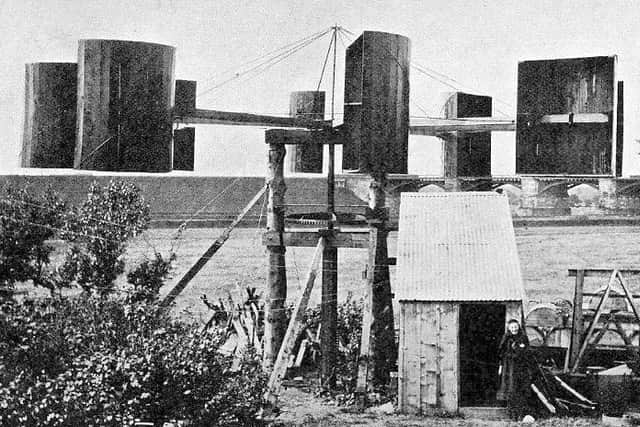Scotland’s offshore wind ambitions are at a crossroads amid global competition - Jeremy Grant
Next month, a blue plaque commemorating James Blyth will be unveiled in a village set in the rolling fields of Aberdeenshire.
Blyth was an electrical engineer who developed the first turbine capable of producing electricity from wind power, and his home in Marykirk became the first building to be powered by wind-generated electricity in 1887.
Advertisement
Hide AdAdvertisement
Hide AdScottish Renewables, the industry body organising the event, says this marked the “very start of Scotland's renewable energy journey”. Over a century later, where is Scotland with offshore wind?


Answering this question may seem tricky given the mixed signals sent by the dumping of the Scottish Government’s 2030 net zero target and a series of announcements by offshore wind developers of progress with their North Sea projects. The latest came last week from Green Volt, jointly owned by Tepco, a Japanese utility, Italian energy group Eni, and Norway-based private equity investors, that it had received offshore planning consent for a wind farm in the North Sea.
So, are the wind turbines half full of wind, or half empty? The answer is that Scotland, and the vast ScotWind project that’s at the core of its offshore wind ambitions, is at a crossroads.
There is still insufficient port infrastructure to cope with all the planned wind farm assembly that happens quayside before turbines are shipped out to sea, while the national grid is in urgent need of upgrading.
Some progress is being made on kick-starting the supply chain required, notably as a result of work by an offshore wind industry body called the Strategic Investment Model working group, in which the Scottish Government has observer status.


But the world has changed in the two years since ScotWind first came to public attention through the award to 20 consortia of subsea options to build wind farms in the North Sea. This is pressuring the project timelines set by the companies in the consortia, including SSE Renewables, BP, Orsted and Marubeni of Japan.
Two years ago, the UK was almost the only offshore wind game in town. It may still have the second largest amount of installed offshore wind capacity in the world after China, but many more countries are in the game now.
The Global Wind Energy Council (GWEC) says there was a 50 per cent increase in offshore wind installations in 2023, compared with 2022. And 54 countries across all continents built new wind power, including Japan, which last week inaugurated the country’s largest commercial offshore wind farm.
Advertisement
Hide AdAdvertisement
Hide AdAll of these projects are scouring the globe for increasingly scarce kit like turbine towers and blades, anchors, electrical systems and cables. That means one thing: competition.
Dealing with this in the right way matters because Scotland accounts for 52 per cent of the UK’s future pipeline of wind farms.
RenewableUK, an industry body, this month published an “Industrial Growth Plan”, setting out how to triple offshore wind manufacturing capacity over the next decade. It identifies strategic manufacturing capabilities that it recommends the UK build up to protect against supply chain risks.
As the report says: “As global competition for renewable energy supply chains intensifies, countries with a long-term, strategic approach will be the most successful in attracting investment in new industry”. James Blyth is watching.
Jeremy Grant is a freelance writer and editor, and was a journalist at the Financial Times and Reuters for 25 years
Comments
Want to join the conversation? Please or to comment on this article.